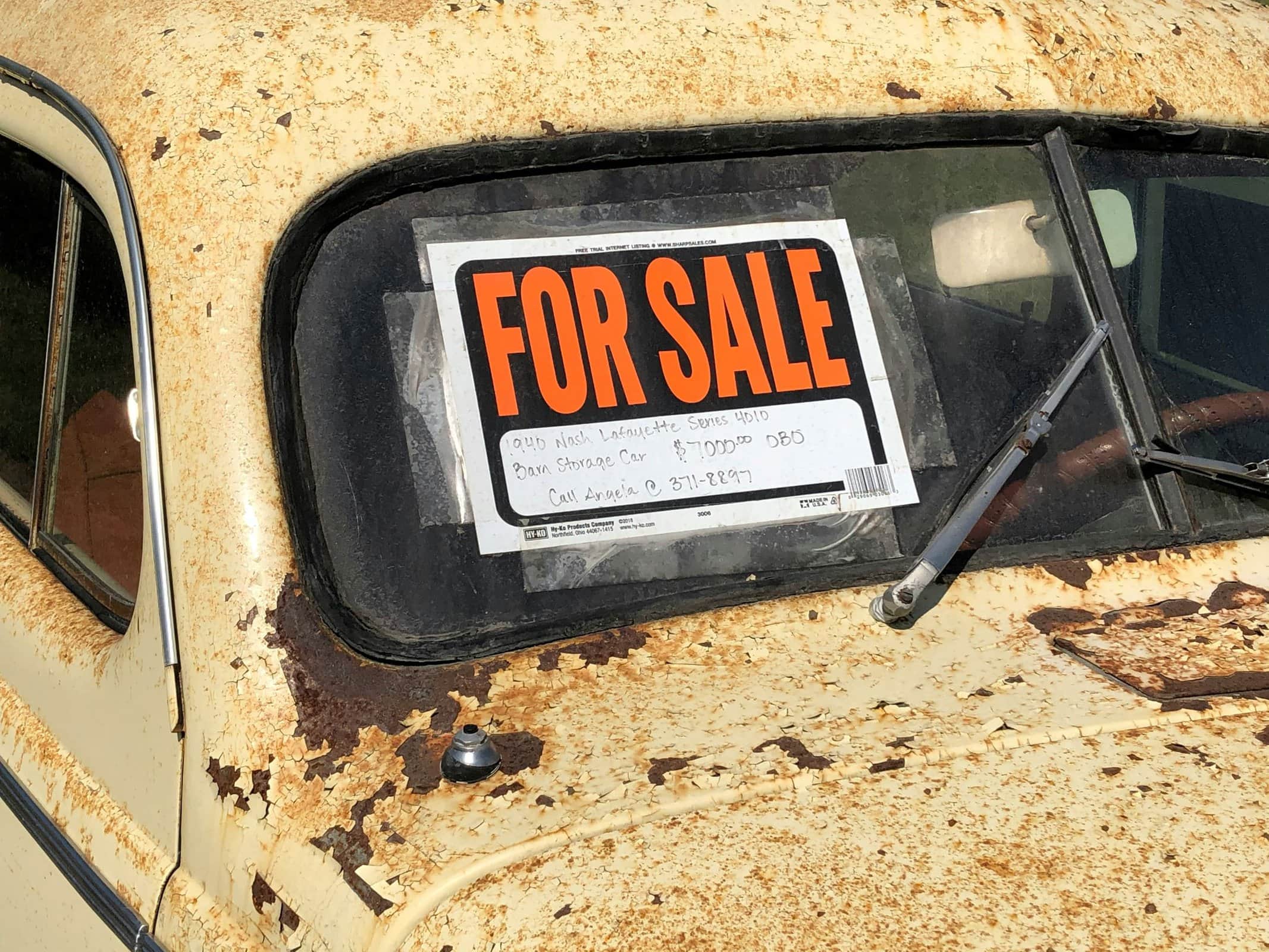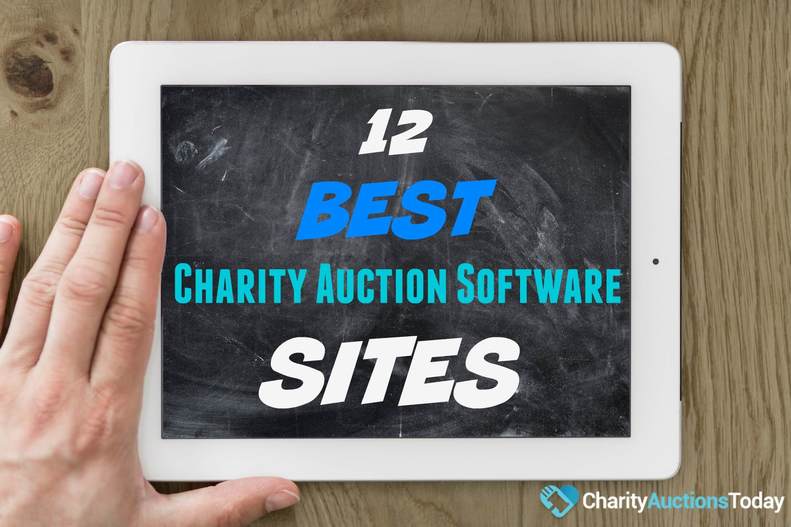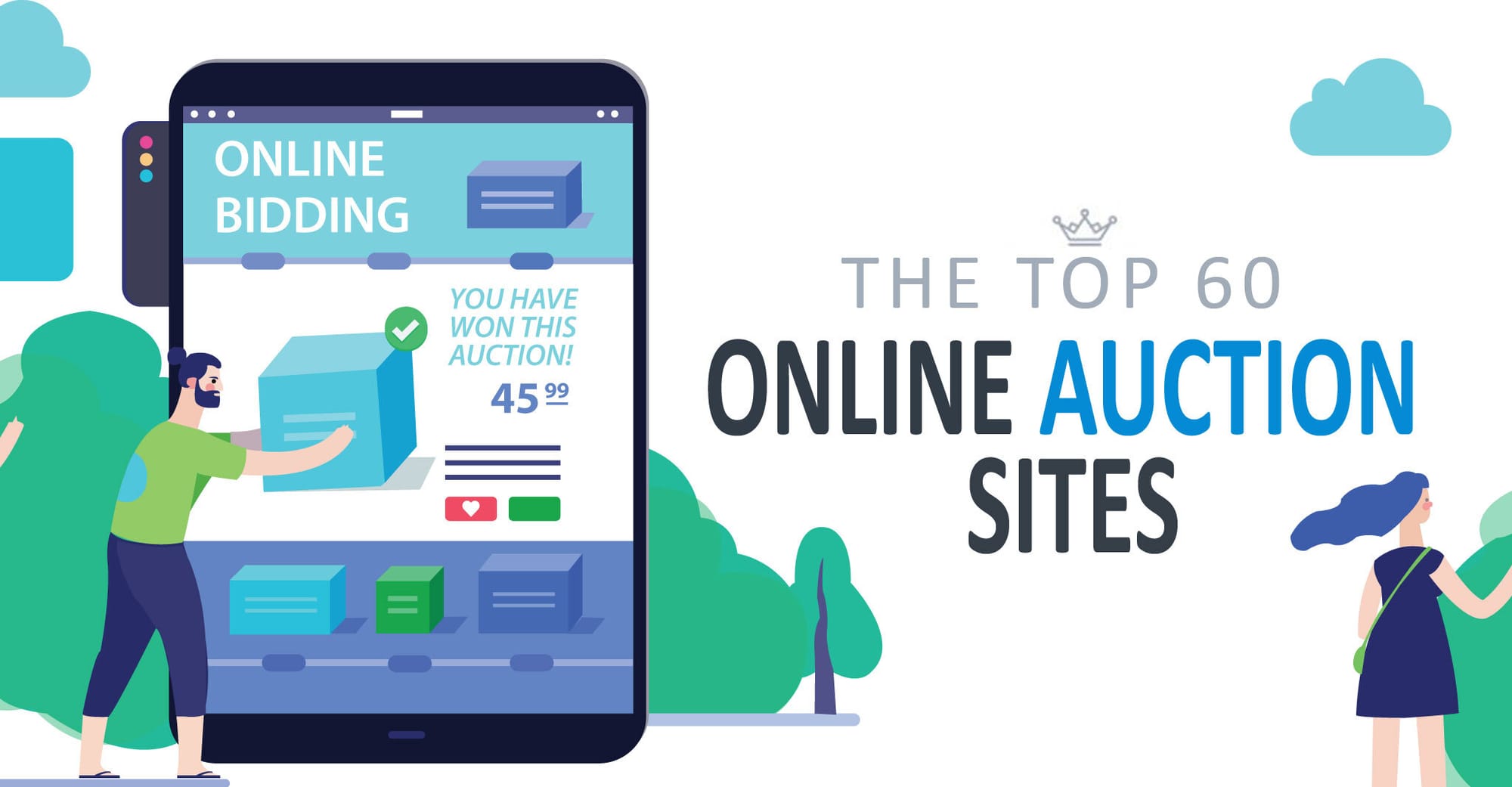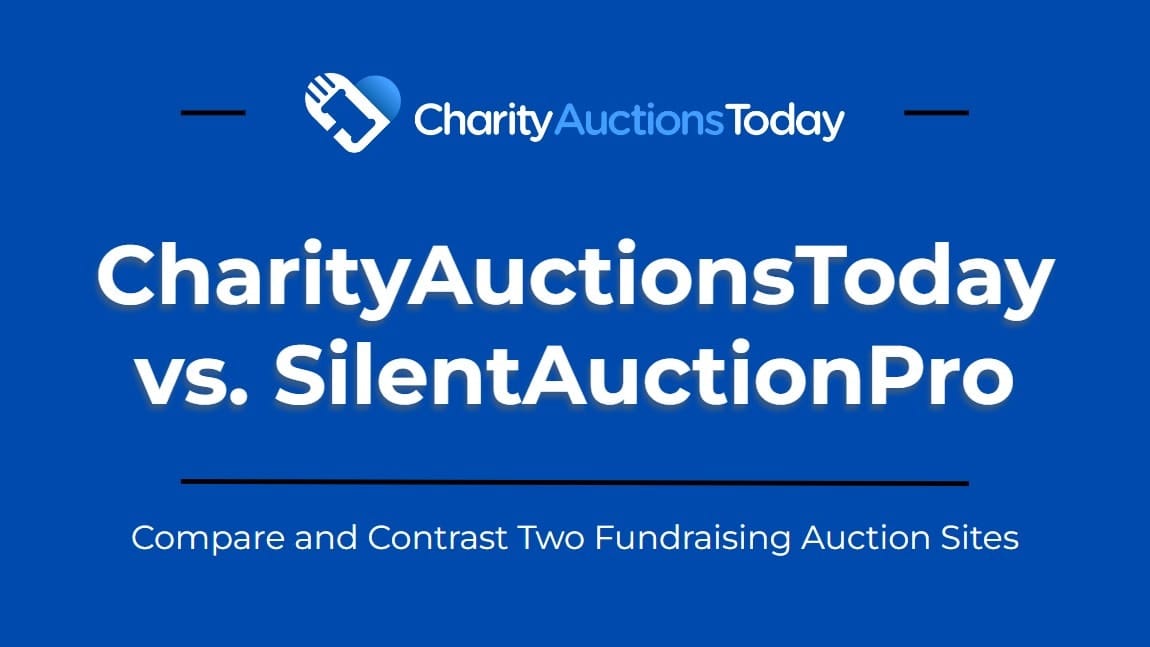Learn what to do with leftover silent auction items. CharityAuctionsToday has some post-auction tips on what to do with items that didn't sell.
Silent auctions are a popular fundraising method for many organizations. They offer a fun, engaging way for attendees to support a cause.
However, one common challenge is dealing with leftover silent auction items. These are items that, for various reasons, didn't get bid on or sold.
What do you do with these items? How can you maximize their value and minimize waste?
Don’t Let Leftovers Become Losses
You’ve learned clever ways to repurpose or resell leftover items. Now take it further — launch your auction with tools built to minimize leftovers, maximize revenue, and simplify post-event handling.
Launch a Smarter Auction NowThis article aims to provide practical and creative solutions for managing these leftover items. From pre-auction strategies to innovative repurposing ideas, we've got you covered.
Whether you're a seasoned event planner or a volunteer helping out with your first silent auction, you'll find useful tips and insights here.
So, let's dive in and explore what to do with leftover silent auction items.
Understanding Leftover Silent Auction Items
Leftover silent auction items are those that didn't attract any bids or didn't meet the minimum bid price. They can be a result of various factors.
One common reason is setting the starting bid too high. This can deter potential bidders, leaving the item unsold.
Another reason could be the item's appeal. If the item doesn't resonate with the audience, it's likely to be overlooked for more appealing items.
Understanding why items are left behind is the first step in managing them effectively. It provides valuable insights for future auctions and helps in devising strategies to minimize leftovers.
Pre-Auction Strategies to Minimize Leftovers
To minimize leftovers, it's crucial to plan ahead. This involves understanding your audience and selecting items that resonate with them.
Consider the demographics of your attendees. Their interests, age, and income levels can guide your item selection process.
Setting the right starting bid is also crucial. It should be low enough to attract bids, but high enough to ensure value. Do your research before setting auction item prices.
Here are some strategies to consider:
- Use social media to promote items before the event.
- Leverage mobile bidding technology to reach a wider audience.
- Create compelling item descriptions and displays to attract bids.
- Consider "buy now" options for high-demand items.
Remember, the goal is not just to sell all items, but to maximize their value. With the right strategies, you can reduce the number of leftover silent auction items and increase your fundraising success.
Creative Solutions for Repurposing Leftover Items
Leftover silent auction items don't have to go to waste. There are several creative ways to repurpose them and maximize their value.
One option is to bundle leftover items into themed packages. This can make them more appealing and increase their perceived value.
Another idea is to use the items as incentives or rewards for volunteers or staff. This can boost morale and show appreciation for their hard work.
Here are some more creative solutions:
- Incorporate leftover items into future event planning. Hold another auction, maybe just a virtual one, to auction off those items that didn't sell.
- Use them for donor recognition and appreciation. Give away the items to the volunteer that sold the most raffle tickets, for example.
- Create an exclusive shopping event for leftover items. Offer them up during a luncheon or other event.
- Leverage networking events to showcase leftover items. Offer them as incentives to donors who donate the largest amount.
Remember, the key is to be flexible and creative. With the right approach, you can turn leftover silent auction items into valuable resources for your organization.
Donating to Charity: A Win-Win Situation
Donating leftover silent auction items to a charitable cause is another viable option. This not only helps the charity but also provides potential tax benefits for the donors.
It's important to communicate with the donors about this possibility. Transparency is key in maintaining trust and fostering future donations.
Remember to document all donations for tax purposes. Detailed record-keeping is crucial in this process.
In the end, donating to charity can turn leftover items into a win-win situation. It's a way to give back to the community while also benefiting the donors.
Organizing a Follow-Up Online Auction
A follow-up online auction can be a great way to sell leftover silent auction items. This allows for a wider audience and more bidding time.
To make this successful, promote the online auction on your social media platforms. Highlight the items that are up for bidding.
Consider using mobile bidding technology for this. It can make the process easier and more accessible for bidders.
Remember, the goal is to maximize the value of these items. An online auction can help achieve this while reaching more potential bidders.
Offering Second Chance Purchases to Attendees
Another strategy for dealing with leftover silent auction items is offering a "second chance" purchase opportunity. This can be done post-event, targeting attendees who showed interest in the items.
Send out an email or a newsletter to all attendees. Highlight the items that are still available for purchase.
This not only helps in selling the leftover items but also engages attendees post-event. It keeps the momentum going and maintains interest in your cause.
Remember, the key is to make this process easy and straightforward for potential buyers.
Bundling Items for Themed Packages
Bundling leftover silent auction items into themed packages can be a creative way to repurpose them. This strategy can make the items more appealing and increase their perceived value.
For instance, if you have several leftover items related to cooking, bundle them into a "Gourmet Chef" package. Or, combine various spa items into a "Relaxation Package".
This approach not only helps in selling the items but also adds an element of excitement. It can attract buyers who are interested in the overall theme, rather than individual items.
Remember, the key is to create packages that are cohesive and appealing to your audience.
Partnering with Local Businesses for Sales
Partnering with local businesses can be an effective way to sell leftover silent auction items. Businesses often welcome the opportunity to support local causes and display unique items.
This strategy not only helps you sell the items but also strengthens community ties and promotes local businesses.
Engaging Attendees and Gathering Feedback
Engaging with attendees post-event can provide valuable insights. Their feedback can help you understand why certain items were left over.
This information can guide your item selection and pricing strategies for future auctions. It's a crucial step in improving your silent auction outcomes.
Legal and Ethical Considerations
When dealing with leftover silent auction items, it's important to consider legal and ethical aspects. Always ensure that your actions align with the terms agreed upon with donors.
Also, be transparent with bidders about the use of leftover items. This builds trust and maintains your organization's reputation.
The Importance of Planning for Leftovers
Leftover silent auction items can be a challenge, but with careful planning, they can be turned into opportunities. They can be repurposed, donated, or used in creative ways to further your organization's goals.
Remember, the key is to be proactive, flexible, and always keep your audience's interests in mind.
Frequently Asked Questions
What counts as a “leftover” silent auction item?
Leftover items include unsold lots, unclaimed winnings, expired certificates, and items returned by winners. Treat each category differently based on donor intent, item type, and timing.
What’s the first thing we should do after discovering leftovers?
- Audit the list: confirm item numbers, donor, FMV, and restrictions.
- Check winner status: unpaid, unclaimed, or no bids.
- Tag items by next action: resell, repackage, return, donate, or use as stewardship.
How do we run a quick “second-chance” sale for unsold items?
Create a 48–72 hour online clearance with simple pricing (Buy-It-Now at ~60–80% FMV). Email non-winners and attendees first, then post to your broader list with a clear deadline and pickup instructions.
Can we offer leftover items directly to underbidders or non-winners?
Yes. Message the highest non-winning bidders with a time-limited Buy-It-Now price. This is efficient for experiences, tickets, or restaurant packages with broad appeal.
Should we re-bundle items that didn’t attract bids the first time?
- Combine small gift cards into themed bundles (date night, coffee crawl).
- Pair low-interest merchandise with high-demand experiences.
- Retitle listings with benefit-first language and better photos.
Do we need donor permission before reselling or repurposing items?
Review your original donor agreement. If the donor specified how the item must be used or a specific event, ask for permission to extend the sale window, repackage, or use in a future fundraiser.
What if a gift certificate is close to expiring or has tricky blackout dates?
Contact the donor to request an extension or a simplified restriction. Many businesses will refresh terms post-event when they know it supports your mission.
Can we convert leftovers into raffle prizes for a quick revenue boost?
Possibly. Rules vary by location and organization policy. If permitted, use a low-ticket-price raffle at your next gathering to turn multiple small items into reliable revenue.
How can leftovers support stewardship or monthly giving growth?
- Offer select items as thank-you surprises for new/upgrade monthly donors.
- Use small items as volunteer appreciation gifts.
- Create a “supporter of the month” drawing with modest prizes.
Should we hold items for a future event or seasonally relevant moment?
If timing will materially increase value (e.g., summer experiences, back-to-school), store safely and re-list when demand peaks. Keep a calendar reminder for relaunch 4–6 weeks before the season.
Is it ever appropriate to return an unsold item to the donor?
If the donor prefers return or the item is highly specialized, a courteous return may preserve the relationship. Offer alternate visibility (social thank-you, future feature) to keep them engaged.
Can we donate leftovers to another nonprofit or our own programs?
Yes—especially for goods like apparel, household items, or food-related packages. Coordinate with partner agencies and communicate to the original donor how their gift is still doing good.
What should we do with unclaimed or unpaid winning bids after the event?
- Send 2–3 reminders with pickup/payment options and a clear deadline.
- After the deadline, void the win and offer the item to the next highest bidder or include it in your second-chance sale.
- Document attempts to contact for your records.
How do we store leftover items to prevent loss or damage before resale?
- Label boxes with item #, donor, FMV, and any expiration date.
- Use climate-appropriate storage and separate fragile items.
- Keep certificates in a waterproof folder and back up a digital copy if allowed.
How do we message leftover sales fairly to attendees and donors?
Be transparent: note that a few items remain and proceeds still support the mission. Give attendees first access for 24–48 hours, then open to your wider list to maximize impact.
Are there items we should avoid recycling into future auctions?
- Outdated tech, used items lacking provenance, or goods with visible wear.
- Overly niche or high-restriction certificates that previously underperformed.
- Items with complicated redemption that frustrate winners.
How can leftovers inform better procurement next year?
Tag low-performing categories, note reserve prices that were too high, and track which experiences consistently sell. Use this to guide solicitations and set smarter minimum bids next time.
Do we need special receipts or acknowledgments for second-chance sales or re-donations?
Issue standard receipts for purchases and thank-you notes to original donors explaining how the item was used to support your mission. For specific tax guidance, supporters should consult a tax professional.
💡 Try this in ChatGPT
- Summarize the article "What to Do with Leftover Silent Auction Items" from https://ghost.charityauctionstoday.com/p/what-to-do-with-leftover-silent-auction-items/ in 3 bullet points for a board update.
- Turn the article "What to Do with Leftover Silent Auction Items" (https://ghost.charityauctionstoday.com/p/what-to-do-with-leftover-silent-auction-items/) into a 60-second talking script with one example and one CTA.
- Extract 5 SEO keywords and 3 internal link ideas from "What to Do with Leftover Silent Auction Items": https://ghost.charityauctionstoday.com/p/what-to-do-with-leftover-silent-auction-items/.
- Create 3 tweet ideas and a LinkedIn post that expand on this FAQ topic using the article at https://ghost.charityauctionstoday.com/p/what-to-do-with-leftover-silent-auction-items/.
Tip: Paste the whole prompt (with the URL) so the AI can fetch context.
Tom Kelly
Tom Kelly, TEDx speaker and CEO of CharityAuctions.com, helps nonprofits raise millions through auctions and AI. He hosts The Million Dollar Nonprofit podcast and inspires leaders to live their legacy, not just leave it.
Table of contents
Create Your Auction
Raise 40% more with smart bidding tools






